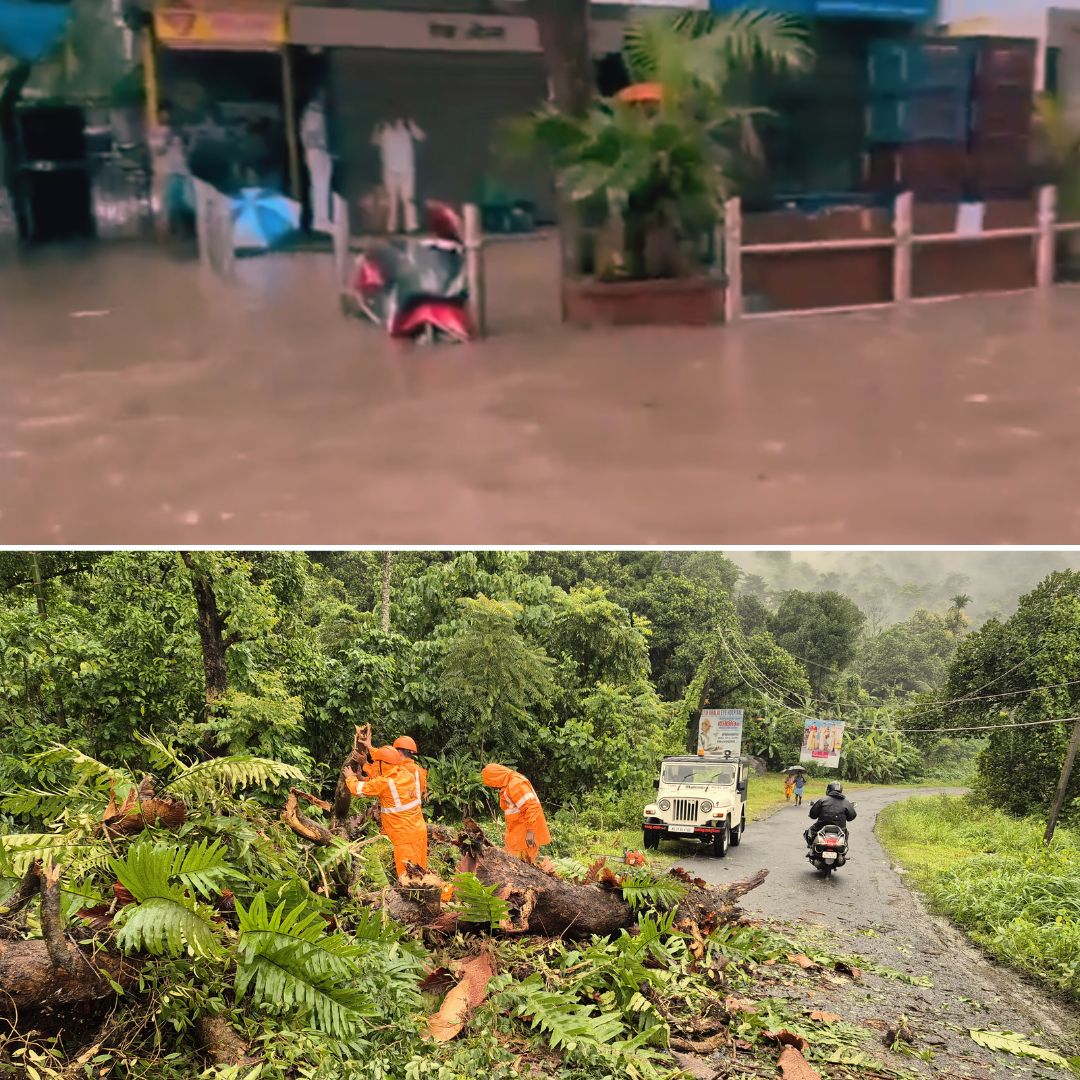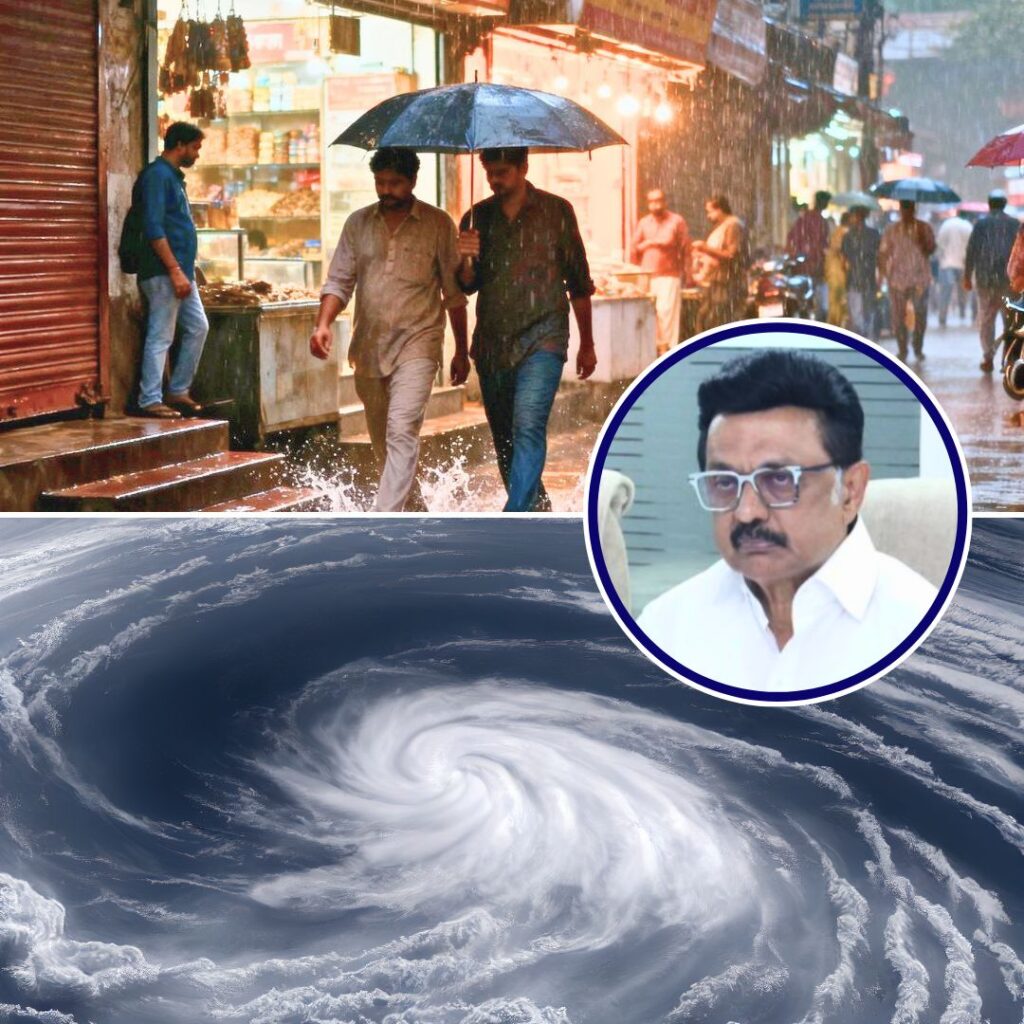The southwest monsoon has arrived early and is expected to bring heavy to very heavy rainfall along India’s west coast, including Kerala, Karnataka, Goa, and coastal Maharashtra, over the coming week. The India Meteorological Department (IMD) has issued red and orange alerts for multiple districts, warning of localized flooding and disruptions.
Health authorities have also issued advisories to prevent vector-borne diseases like dengue, malaria, and chikungunya, which tend to spike during the monsoon. Officials urge residents to stay alert, take precautions, and follow safety guidelines as the intense rains continue.
Monsoon’s Early Arrival Triggers Weather and Health Alerts
The IMD officially declared the onset of the southwest monsoon in Kerala on May 24, marking one of the earliest arrivals in recent years, and noted its rapid progression northwards to Maharashtra and Karnataka.
The department has forecast heavy to very heavy rainfall in coastal and ghat regions, with some areas expected to receive over 100 mm of rain in 24 hours.
A well-marked low-pressure area over south Madhya Maharashtra is contributing to these intense showers, with red alerts issued for districts in Kerala and Mumbai, and orange alerts for adjoining areas. The heavy rains have already caused waterlogging in parts of Mumbai and Bengaluru, disrupting traffic and daily activities.
Alongside these weather developments, the Ministry of Health and Family Welfare has sounded the alarm on the increased risk of monsoon-related illnesses. “The onset of heavy rains creates ideal breeding conditions for mosquitoes, which can lead to outbreaks of dengue, malaria, and chikungunya,” said Dr. Anjali Mehta, a public health expert.
Health advisories recommend eliminating stagnant water around homes, using mosquito nets and repellents, and seeking immediate medical attention if symptoms such as fever, joint pain, or rashes appear. Hospitals and clinics in affected regions have been advised to prepare for a possible rise in cases, and local authorities are intensifying vector control measures, including fumigation and public awareness campaigns.
Contextualising the Early Monsoon and Its Wider Impact
Typically, the southwest monsoon arrives in Kerala by June 1 and reaches Maharashtra by June 7, but this year’s early onset—eight days ahead of schedule—is attributed to a rare combination of atmospheric and oceanic factors.
These include a low-pressure system over the Arabian Sea, a trough line across Vidarbha, and enhanced moisture inflow from the Indian Ocean.
Meteorologists note that while early monsoons can benefit agriculture by extending the growing season, they also increase the risk of floods, landslides, and health emergencies, especially in urban and vulnerable rural areas.
The government has ramped up preparedness measures, including monitoring river levels, reinforcing embankments, and coordinating with disaster response teams. Public health departments are collaborating with municipal bodies to ensure timely vector control and community engagement.
Experts caution that after the initial surge, the monsoon may experience a temporary slowdown in early June due to mid-latitude dry air intrusions, which could affect rainfall distribution and agricultural planning. This variability underscores the importance of adaptive strategies and resilient infrastructure.
Monsoon Intensifies in Kerala; Red Alert in 11 Districts Today, Widespread Damage Reported; Fishing Banned Along Kerala, Karnataka, Lakshadweep Coasts.@airnewsalerts @airnews_tvm pic.twitter.com/xijYqvOpUx
— All India Radio News Trivandrum (@airnews_tvm) May 26, 2025
The Logical Indian’s Perspective
The early and intense arrival of the southwest monsoon is a powerful reminder of nature’s unpredictability and the urgent need for holistic preparedness that encompasses both environmental and public health dimensions. While the rains bring life-sustaining water and relief from summer heat, they also expose the vulnerabilities in our urban planning, healthcare systems, and community awareness.
At The Logical Indian, we believe that fostering empathy, cooperation, and proactive dialogue among citizens, authorities, and health professionals is essential to navigate these challenges effectively. How can communities enhance their resilience by combining traditional wisdom with modern science to safeguard lives and livelihoods during such extreme weather events?
ಮುಂದಿನ 7 ದಿನಗಳ #ಮಳೆ #ಮುನ್ಸೂಚನೆ ಮತ್ತು #ಎಚ್ಚರಿಕೆಗಳು: (ಮೂಲ: IMD)
— Karnataka State Natural Disaster Monitoring Centre (@KarnatakaSNDMC) May 27, 2025
ರಾಜ್ಯದಾದ್ಯಂತ ಅಲ್ಲಲ್ಲಿ ಗುಡುಗು, ಮಿಂಚು ಸಹಿತ ಇಂದು ಕರಾವಳಿ ಮತ್ತು ಮಲೆನಾಡು ಜಿಲ್ಲೆಗಳಲ್ಲಿ ಸಾಧಾರಣದಿಂದ ಭಾರಿ ಮಳೆ ಹಾಗೂ ಅಲ್ಲಲ್ಲಿ ಅತಿ ಭಾರಿ ಮತ್ತು ಅತ್ಯಧಿಕ ಮಳೆಯಾಗುವ ಸಾಧ್ಯತೆಯಿದೆ, IMD ಯಿಂದ #ರೆಡ್ಅಲರ್ಟ್ ನೀಡಲಾಗಿದೆ. pic.twitter.com/S7hMdVTDVs
Multi Hazard Warning (26.05.2025)
— India Meteorological Department (@Indiametdept) May 26, 2025
❖ Heavy to Very Heavy Rainfall with isolated Extremely Heavy Rainfall very likely at isolated places over Costal Karnataka, Kerala & Mahe, Konkan & Goa, Madhya Maharashtra, South Interior Karnataka and Tamil Nadu Puducherry & Karaikal.
❖… pic.twitter.com/O6SaQA5T7I











